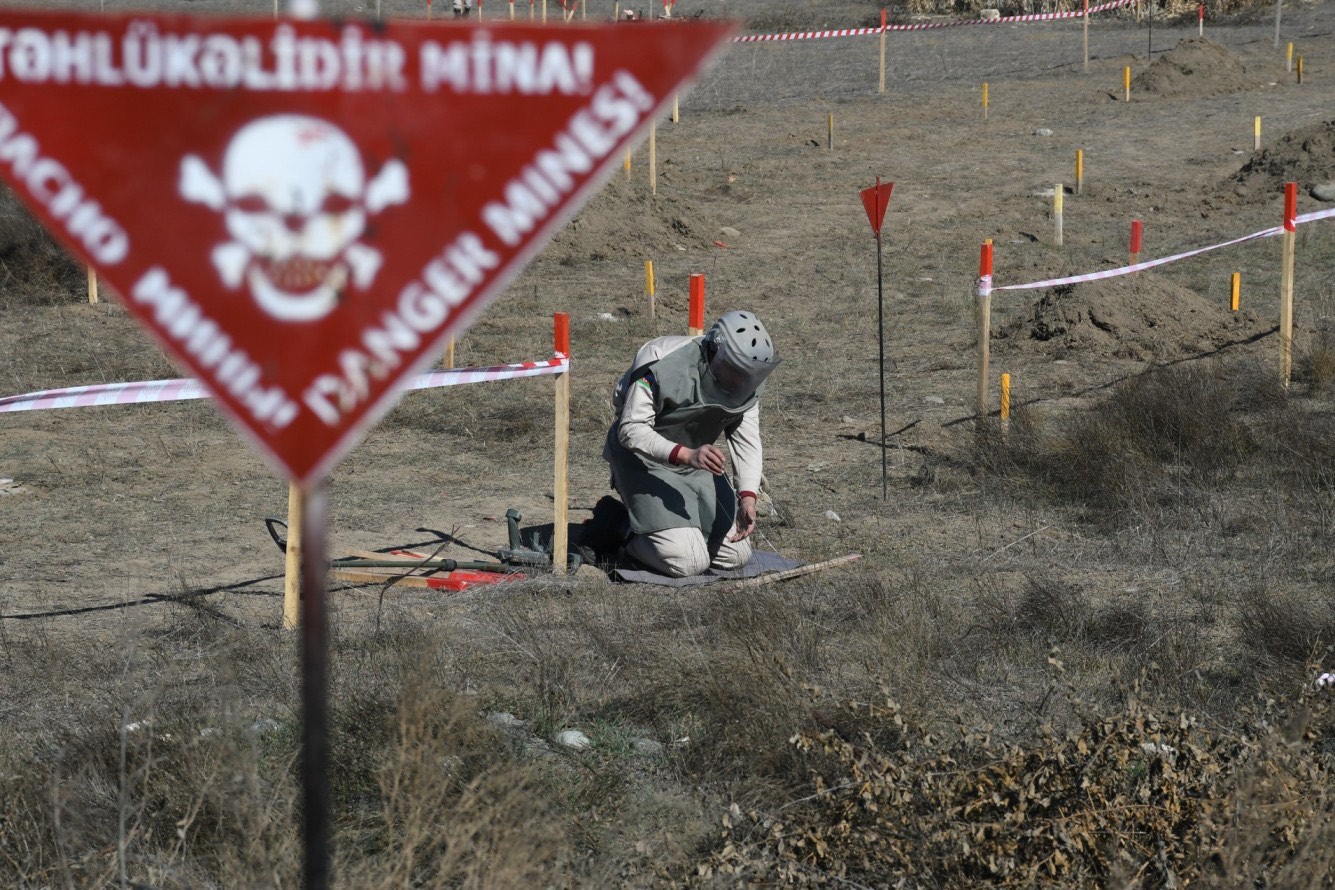Demining efforts in the liberated territories of Azerbaijan have made significant progress. About 40 percent of Agdam, Fizuli and Khojaly rayons have been cleared of landmines. The President’s special envoy Emin Huseynov announced this at the opening of the First Islamic World Cultural Forum in Shusha.
Huseynov stated that about 50 percent of Agdam and 60 percent of Fizuli have been cleared of mines, while the work in Khojaly is still limited. “Only a small area in Khojaly has been cleared of mines. However, demining activities will soon gain momentum in this region, where our cultural and historical sites are also located,” Huseynov said. Demining is part of Azerbaijan’s comprehensive strategy to reduce the impact of past armed conflicts in the Karabakh region and rebuild the region. However, heavily planted landmines are seriously slowing down this process. Since the 1990s, the Armenian armed forces have reportedly planted more than one million landmines in the Karabakh and Eastern Zangezur regions. Following the war in 2020, around 3,000 landmines of 2021 production alone were detected in the Kelbajar and Lachin regions. This shows that despite the end of hostilities, threats remain. Since the end of the war in 2020, 392 Azerbaijani citizens have been killed or injured by landmine explosions. In total, more than 3,400 people, including 358 children and 38 women, have fallen victim to landmines since the start of Armenia’s aggression. One of the most recent incidents took place on April 4. An employee of the Azerbaijan National Demining Agency (ANAMA) in Jabrayil and three civilians in Agdam were injured in a mine explosion. Armenia’s unwillingness to provide maps of its minefields remains one of the biggest obstacles to clearance efforts. Although Armenia announced in 2021 that it had handed over 972 maps to Azerbaijan, purportedly showing the location of 97,000 explosives, ANAMA notes that these maps are incomplete and unreliable. According to preliminary estimates, about 12 percent of Azerbaijan’s territory is contaminated with 1.5 million landmines and an unknown number of unexploded ordnance. In 1991, Armenia launched a full-scale military offensive against Azerbaijan, which lasted until a ceasefire in 1994. As a result of the war, 20 percent of Azerbaijan’s internationally recognized territory was occupied, more than 30,000 people were killed and 1 million were forcibly displaced as a result of ethnic cleansing. On September 27, 2020, the fighting flared up again when Armenian forces attacked Azerbaijani military posts and civilian settlements, and ended with Azerbaijan liberating more than 300 settlements, including Jabrayil, Fuzuli, Zəngilan, Qubadli and Shusha, after a 44-day counter-offensive. The war ended with a trilateral declaration signed between Azerbaijan, Armenia and Russia on November 10, 2020. With this declaration, the regions of Agdam, Kalbajar and Lachin were returned to Azerbaijan. In the aftermath of the war, the Azerbaijani state has been conducting extensive demining activities in the liberated areas to ensure the safe return of internal refugees. However, this process faces challenges as Armenia still has not shared reliable mine maps and has planted new mines over 500 kilometers between 2020 and 2023. According to ANAMA’s data, 62,023 hectares were cleared in 2024 alone. During this period, 59,163 unexploded ordnance, 4,286 personnel mines and 2,372 tank mines were neutralized.

